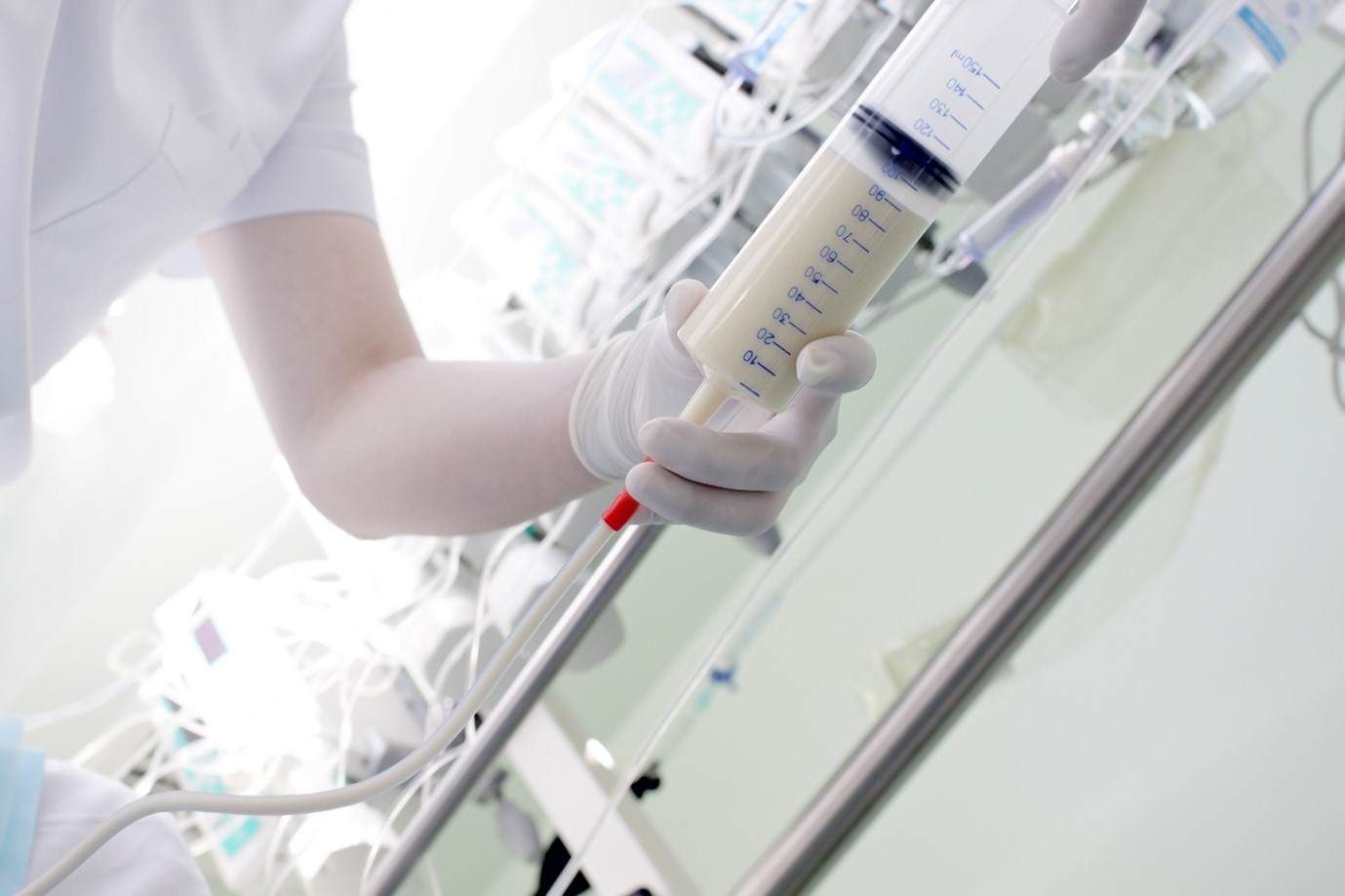We get many questions from our aged care homes on how to prepare for a new resident with a tube feed. So we’ve come up with a check list of all the things that need to be considered for a smooth admission for your home and your resident.
Type of Tube
Is it a PEG, PEJ, NG?
Most tubes that come into aged care homes are PEG or gastrostomy tubes (meaning they deliver the feed directly into the stomach). However, sometimes Nasogastric tubes or PEJ tubes (this deliver feed into the small intestines)) are in place. Different tubes require some different care which should be highlighted to staff. For example,
- PEJ tubes should not be rotated.
- Nasogastric tubes require the position to be checked frequently as they are more prone to becoming dislodged.
If you have questions or your staff need some upskilling, plan it early. Discuss your needs with your Plena Healthcare Dietitian, so they are able to help you determine what sort of training your staff need. Or if the discharge is sudden, ask the hospital tube feeding nurse or hospital dietitian about the tube care instructions.
Type of Feeding Formula
If you already have an agreement with a nutritional supplements supplier (e.g. Nestle, Abbott) and it is a different brand to the formula recommended by the hospital dietitian, contact the hospital dietitian to ask if it is possible to change the formula.
Contact your nutritional supplements supplier as soon as possible to order the formula once you’ve confirmed the feed formula type and brand.
Ensure that the hospital will provide enough formula to fill the time between discharge and the time your facility’s order will be delivered. Ask them for extra days’ worth of formula if needed.
Feeding Method
Pump, bolus or gravity drip?
A pump is used for giving feeds without stopping over a number of hours.
If a pump is used to give the feed, check that the resident already has a pump and ‘giving set’ coming with them to the facility. Ask the hospital to send over extra giving sets if needed. If they do not have these, ring your nutritional supplements supplier and ask if a pump can be sent to the facility. You can also ask the nutritional supplements supplier to teach you how to set up and use the pump correctly.
Bolus feeding is used to give feeds at set times in the day, for a set length of time. For example, 400ml of feed in 45minutes.
If they are on a bolus feeding regime, check that the resident already has enough feeding syringes coming with them to the facility. Ask the hospital to send over extra syringes if needed. Ring your nutritional supplements supplier if you need more feeding syringes, and if you’re not sure how to give a bolus properly, ask to speak to someone from the nutritional supplements company who can guide you.
Gravity drip feeding is used to give bolus feeds but using a gravity drip system.
If they are on a gravity drip regime, check that the resident has a gravity set coming with them to the facility. Ask the hospital to send over extra gravity sets if needed. Ring your nutritional supplements supplier if you need more gravity sets, and if you’re not sure how to properly use a gravity set to feed, ask to speak to someone from the nutritional supplements company who can guide you.
You may need ENFit connectors
To reduce the risk of feed and IV medication mix ups, all tube feeding is being transitioned to using equipment with what is called ‘ENFit’ ends. Many giving sets and syringes are already fitted with ENFit ends, but there are still a mix of feeding tubes being placed in people’s bodies.
If the resident’s feeding tube (e.g. PEG) has an ENFit end, all will be compatible. But if it is an older style of tube, you may need to order ENFit connectors to make the tube compatible to the ENFit giving sets and syringes. These should stay in the tube and not be removed or discarded after feeds.
If you’re not sure, ring the hospital to ask, or check with your nutritional supplements supplier.
Water flushes
Water flushes are important to keep the tube working well and to keep your resident hydrated.
You will need syringes for water flushes, for pump, gravity, and bolus feeding regimes. Consider the types and sizes of syringes you need. Do you have enough available or do you need to ring your nutritional supplements company to order more?
Feeding Regimen and Flushes
Carefully read the dietitian’s instructions in the discharge summary or handover. How much feed is provided, what times and what rate? How much water is required and when is it given? These are calculated with the resident’s needs and tolerance in mind, so follow these closely.
Nil by Mouth or Eating
If a resident is eating, what type of diet are they on? Make sure they are receiving the appropriate diet and fluid texture to prevent a choking or aspiration episode.
If they are nil by mouth (not eating anymore), continue to perform regular mouth care to ensure they are comfortable.
Get the help you need
Your Plena Healthcare Dietitian is equipped to assist with the tube feeding formula, feeding method, and troubleshooting any intolerance to the feed.
For additional support about supplies or maintenance of the tube and stoma (the opening in the skin which the tube goes through), you can seek out:
- Stoma Care teams
- In Reach Services
- General Practitioners
- Nutritional Supplements Supplier representatives
When is the discharge scheduled
Confirm all your supplies are in hand and your staff are ready and confident to receive your new resident. Remember to update the care plan with all the feeds, water flushes, and tube care schedules. Discuss with your dietitian and manager regarding possible rebates or funding for the feeds and giving sets.
If you would like more information, please contact Plena Healthcare Dietetics on 136 033



